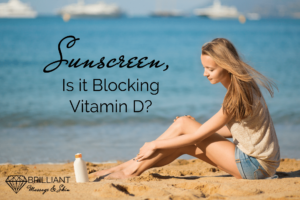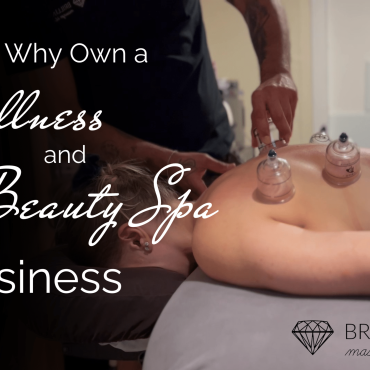Sunscreen, is it Blocking Vitamin D?


That’s because it can be hard to get. There are a few foods that are rich in vitamin D:
- Cheese
- Fatty fish, including salmon, sardines, herring, tuna, and mackerel
- Liver
- Specially fortified foods like fortified orange juice with vitamin D.
But this usually can account only for a little more than 10% of your vitamin D requirements. You need to get the rest either through supplements or the sun.
Exposure to sunlight is a convenient way to meet our daily vitamin D needs. That might make you wonder: Does wearing sunscreen interfere with vitamin D levels and potentially cause vitamin D deficiency?
The short answer is not really. There might be a slight decrease but not significant. Dermatologists say we should wear sunscreen regardless if we are low on Vit D.
No matter your skin type, we all should wear sunscreen to reduce the risk of skin cancer and slow down aging. 90% of aging is from sunscreen. While individuals with darker skin have a lower risk of skin cancer from sunlight, they should still follow sun protection guidelines with SPF Sunscreen.
As far as getting enough vitamin D, it is also recommended to take a daily multivitamin, which typically contains an amount of vitamin D that would provide adequate blood levels of the vitamin. Optimizing vitamin D levels is important for bone health and can help minimize the thinning of bone and the risk of fractures. The National Institute of Medicine’s Recommended Dietary Allowance for vitamin D, which is based on a person receiving minimal or no sun exposure, is:
- 400 International Units for infants/children 0-1 years
- 600 IU for children, teenagers, and adults 1-70 years
- 800 IU for adults 71+ years
To achieve adequate vitamin D levels, it is best to take a multivitamin each day rather than sun exposure. The former is simple and inexpensive, and at the same time, prevents the development of skin cancer and skin aging. Even in wintertime, snow can intensify the sun exposure by reflecting off of it onto your skin.
Vitamin D supplements can also help and are very effective for those who have low vitamin D levels.
Sunlight contains UVA and UVB radiation, and the latter is essential for vitamin D synthesis. Researchers compared two sunscreens with the same SPF. Sunscreen with a high UVA protection factor enabled significantly higher vitamin D synthesis than a low UVA protection factor sunscreen, likely because it allows more UVB transmission.
The researchers conclude that we can obtain the benefits of sunscreen without compromising the vitamin D levels.
“Sunlight is the main source of vitamin D. Sunscreens can prevent sunburn and skin cancer, but there has been a lot of uncertainty about the effects of sunscreens on vitamin D,” said lead author Prof. Antony Young of King’s College London. “Our study, during a week of perfect weather in Tenerife, showed that sunscreens, even when used optimally to prevent sunburn, allowed excellent vitamin D synthesis.”
We should put sunscreen daily, not being afraid of lack of vitamin D, because taking multivitamins is the best way, and chances are you will still be getting vitamin D synthesized in your skin even though you apply sunscreen.
These factors alone show we should wear sunscreen for no fear it interrupts Vitamin D production.
- No sunscreen blocks 100% UVB rays: SPF 30, for example, blocks 97%, SPF 50 blocks 98%, and SPF 100 blocks 99% of UVB rays.
- Are you applying enough: most of us don’t apply 1/4 of a teaspoon on the face or a small shot glass on the body every day, let alone reapply it every 2 hours.
- You often miss a spot or two: like your ears, your scalp, or between your fingers. You may think these patches are small, but they’re enough to provide you with all the vitamin D you need.
Vitamin D is synthesized in the skin when it’s exposed to UVB wavelengths from the sun.
So if 15% to 20% of one’s body surface is exposed to sunlight, unprotected, for 15 to 20 minutes, two to three times per week, one could achieve adequate vitamin D levels.
Factors Affecting Vitamin D Absorption
Several factors influence a person’s vitamin D levels besides the application of sunscreen. Here are five important ones.
- Where you live, the further away from the Equator you live, the less vitamin D–producing UVB light reaches the earth’s surface during the winter. Residents of Vermont, for example, make little if any of the vitamins from November through February. Short days and clothing that covers legs and arms also limit UVB exposure.
- Air quality. Carbon particles in the air from burning fossil fuels, wood, and other materials scatter and absorb UVB rays, diminishing vitamin D production. In contrast, ozone absorbs UVB radiation, so pollution-caused holes in the ozone layer could end up enhancing vitamin D levels.
- Skin color. Melanin is the substance in the skin that makes it dark. It “competes” for UVB with the substance in the skin that kick-starts the body’s vitamin D production. As a result, dark-skinned people tend to require more UVB exposure than light-skinned people to generate the same amount of vitamin D.
- Weight. Body fat sops up vitamin D, so it’s been proposed that it might provide a vitamin D rainy-day fund: a source of the vitamin when intake is low, or production is reduced. But studies have also shown that being obese is correlated with low vitamin D levels and that being overweight may affect the bioavailability of vitamin D.
- Age. Older people have lower levels of the substance in the skin that UVB light converts into the vitamin D precursor. There’s also experimental evidence that older people are less efficient vitamin D producers than younger people.
We prefer to use PCA sunscreens. And for the ladies’ makeup that has sunscreen already in, it is always helpful too. Such brands as Jane Iredale is a great example. We carry both PCA and Jane Iredale at our office so that you can purchase quality skincare for your needs.

Getting a facial can reverse the effects of sun damage on your skin.
Brilliant Massage & Skin
Burlington, Vermont


